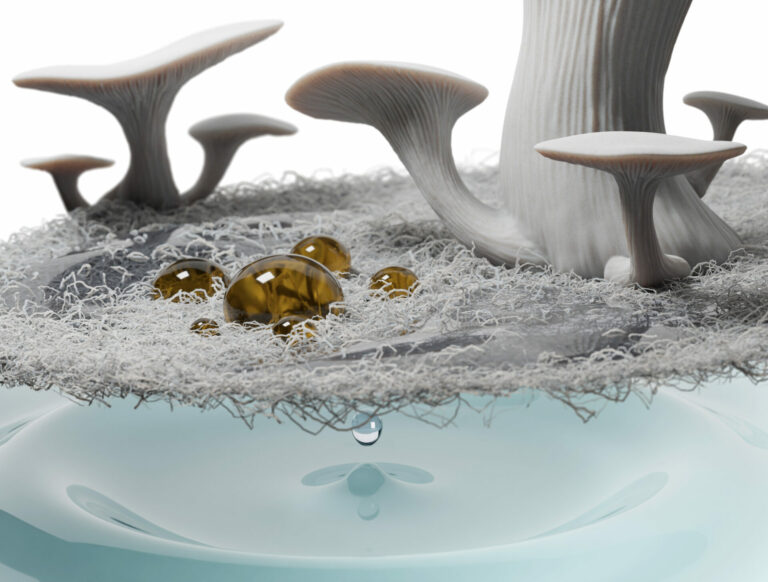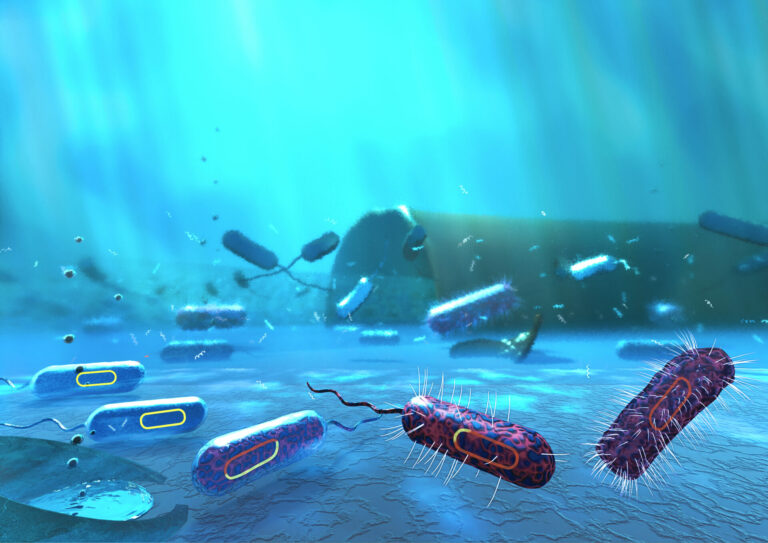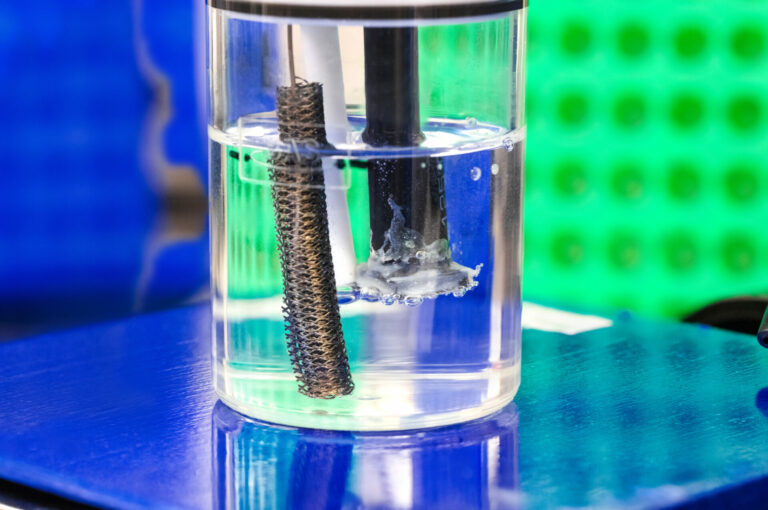Environmental Science and Engineering
A solar heater inspired by the lotus flower
Chemical tricks improve the efficiency and durability of photothermal membranes that use sunlight to turn water into steam.


A polypyrrole (PPy)-coated device that absorbs sunlight and releases it as heat can rapidly purify water through distillation
Reproduced with permission © 2015 WILEY-VCH Verlag GmbH & Co. KGaA, Weinheim
A point-of-use solar distillation device that can clean up saltwater and wastewater without producing greenhouse gases has been constructed by a research team from KAUST.
The key to the new technology is a floating membrane coated with a special light-absorbing polymer that repairs its hydrophobic “skin” when damaged.
For centuries, attempts have been made to use the sun’s heat to distill clean water from polluted sources. Simple solar stills, such as a glass plate placed over a water-filled box, are inexpensive to operate but are notoriously inefficient. This is because water is a poor light absorber, and any captured heat tends to distribute uniformly through the still instead of localizing at surfaces where evaporation occurs.
To combat these problems, researchers are developing floating “solar generator” materials that heat up quickly in sunlight and then trap heat at air–water interfaces for steam production.
These devices are usually coated with water-repellant waxy molecules, such as fluorinated alkyl chains, for better floating. However, damage from ultraviolet rays and oxidative chemicals can degrade the hydrophobic layers, causing the generator to sink.
Inspired by the lotus flower, a plant that restores damage to its hydrophobic leaves through the migration of waxy molecules, KAUST Associate Professor Peng Wang and colleagues from the University’s Biological and Environmental Science and Engineering Division developed a self-healing solar generator.
The researchers coated a tightly woven stainless steel mesh with polypyrrole (PPy), a light-absorbing polymer with high photothermal conversion efficiency and bumpy surface microstructures. The team modified the PPy film with fluoroalkylsilane chains, enabling it to act as a reservoir that supplies additional hydrophobic chains to damaged regions through biomimetic self-migration.
The new device nearly tripled the output of freshwater from typical solar stills, thanks to a significant jump in temperature at the air–water interface and a conversion efficiency of close to 60 percent. It also exhibited remarkable damage resistance: after the team used a plasma source to oxidize the mesh and make it sink to the bottom of a beaker, they found a simple one-hour treatment in sunlight was sufficient to restore its self-floating capability.
The team’s first prototype — a transparent plastic condensing chamber and solar fan mounted on top of a PPy-coated mesh — floats lightly on the surface of seawater and distills a steady stream of water for more than 100 consecutive hours.
“Careful material selection allowed us to integrate two types of functions into one distillation device,” Wang said. “This has great potential to be employed in point-of-use potable water production.”
References
- Zhang, L., Tang, B., Wu, J., Li, R. & Wang, P. Hydrophobic light-to-heat conversion membranes with self-healing ability for interfacial solar heating. Advanced Materials 27, 4889-4894 (2015).| article
You might also like

Bioscience
Sediments reveal core stressors on Red Sea ecosystems

Bioengineering
Greening initiatives that hit home

Chemical Engineering
Magical mushrooms turn membranes green

Environmental Science and Engineering
A green polymer film offers climate-friendly cooling

Bioscience
Accounting for oxygen in modeling coastal ecosystems

Bioengineering
Cutting the odds of drug-resistant pathogens emerging in wastewater

Environmental Science and Engineering
Sharing best practice for radiative cooling

Environmental Science and Engineering



